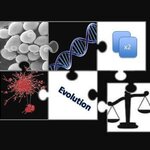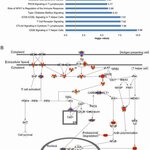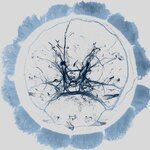Genetics & Molecular Biology

Geneticists have found a mechanism sought for more than four decades that explains how gene duplication leads to novel functions in individuals.
Gene duplication is a biological phenomenon that leads to the sudden emergence of new genetic material. 'Sister' genes – the products of gene duplication – can survive across long evolutionary timescales, and allow organisms to tolerate otherwise lethal mutations.
The
Trinity College Dublin
geneticists have now identified and described the mechanism underlying this increased tolerance, which is known as 'mutational robustness'. By…

Epigenetics has been used and abused in many ways - can it tell researchers that an expectant mother had no electricity for a few days?
In January of 1998, what came to be called the North American Ice Storm of 1998 occurred. It knocked out power for days in cities and weeks in remote areas, impacting up to 4 million people. It was so worrisome that the government, concerned about panic among peaceful Canadians, deployed nearly 25 percent of its armed forces to keep peace in Quebec.
Did it change the DNA signature of unborn babies? Scholars from the Douglas Mental Health…

Melatonin, a hormone that governs sleep and jet lag in humans, may also drive the mass migration of plankton in the ocean, according to a report by scientists at the European Molecular Biology Laboratory (EMBL) in Heidelberg.
Melatonin, is essential to maintain our daily rhythm, and the scientists have now discovered that it governs the nightly migration of a plankton species from the surface to deeper waters. The findings, published online today in Cell, indicate that melatonin's role in controlling daily rhythms probably evolved early in the history of animals, and hold hints to…

A person's face is the first thing that others see, and much remains unknown about how it forms — or malforms — during early development. Recently, Chong Pyo Choe, a senior postdoctoral fellow working in the lab of USC stem cell researcher Gage Crump, has begun to unwind these mysteries.
In a September study published in the journal Development, Choe and Crump describe how a mutation in a gene called TBX1 causes the facial and other deformities associated with DiGeorge syndrome.
During prenatal development, a series of segments form that eventually organize many features of the face. These…

Credit: Jeremy Keith via Flickrhttp://bit.ly/1yiCYYT. Rights information: http://bit.ly/NL51dk
By
Benjamin Plackett, Inside Science -- (Inside Science) Eating too much meat often makes the headlines, whether the risk of doing so is equated to smoking or cited as the cause of rising diabetes rates. All the buzz has many of us pondering the same question: Am I eating too much meat?
Though some of these articles have already been labeled as “sensational journalism,” a new study published in the American Journal of Hypertension has shown that people who eat more protein -- whether from plant or…

A longstanding question in science has the role of mitochondria in debilitating and fatal motor neuron diseases.
Mitochondria are organelles – compartments contained inside cells – that serve several functions, including making ATP, a nucleotide that cells convert into chemical energy to stay alive. For this reason mitochondria often are called "cellular power plants." They also play a critical role in preventing too much calcium from building up in cells, which can cause apoptosis, or cell death.
For mitochondria to perform its functions, it must be distributed to cells throughout the body…

Circular RNA were discovered a few years ago, but their role in our bodies is poorly understood.
Our genetic information is stored in DNA, tiny strands of nucleic acid that contain instructions for the functioning of our bodies. To express this genetic data, our DNA is copied into RNA molecules, which then translate the instructions into proteins that perform tasks in our cells. Several years ago, scientists discovered a new type of RNA molecule. Unlike all other known RNAs, this molecule is circular, and was labeled circular RNA.
Although circRNA molecules are abundant, little has…

There is never enough of this golden beauty. Credit: bradhigham, CC BY
By Angela White, University of Sheffield
Improving wheat is a major challenge for agricultural scientists. The world’s population continues to grow – and so does its appetite. Sanjaya Rajaram, winner of the 2014 World Food Prize, used an innovative breeding technique to develop 480 new wheat varieties. Rajaram’s varieties are high-yielding yet resistant to diseases and stresses, which allows them to thrive in a range of environments. Across the world, scientists are currently exploring a range of strategies to increase…

Humans may think we are eating paleo - like ancient ancestors - or organic - like before the advent of modern fertilizers and pesticides in the early 1800s - but nothing could be further from the truth. The microbiome of today shares little in common with people of even 100 years ago and if epigenetic claims about diet are true, our genome is different as well.
And nothing should be changed like pigs, which are commonly now descended from Asian and European mixes. But a team of Spanish researchers have obtained the first partial genome sequence of an ancient pig, sequences from remains found…

That DNA makes RNA which makes protein is a simplified explanation molecular biologists use to explain for how genetic information is deciphered and translated in living organisms.
The process is more complicated than the schema first articulated nearly 60 years ago by Nobel Laureate Francis Crick, co-discoverer of the DNA's double-helix structure. Now it is known that there are multiple types of RNA, three of which—messenger RNA (mRNA), transfer RNA (tRNA), and ribosomal RNA (rRNA)—are essential for proper protein production. Moreover, RNAs that are synthesized during the process known as…